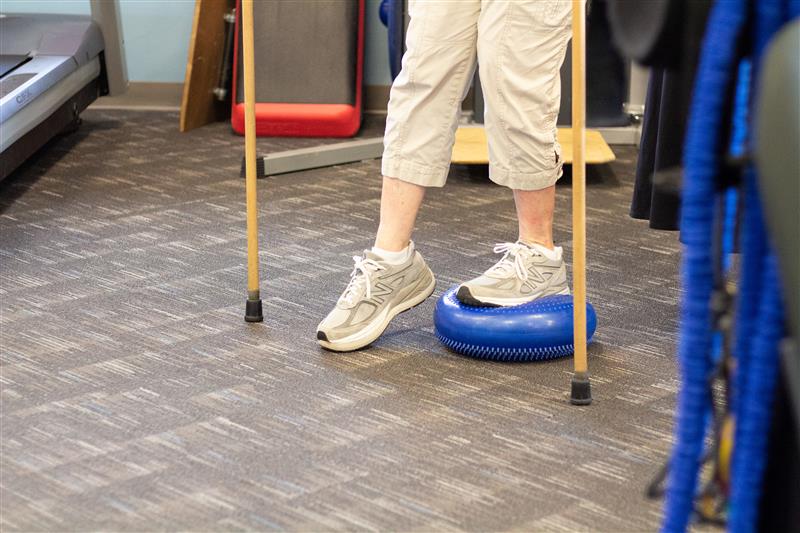Chronic pain affects at least 100 million American adults. That is more people than those affected by diabetes, heart disease, and cancer combined. A typical treatment of chronic pain has been prescription medications such as opioids, including codeine, morphine, oxycodone, hydrocodone, and tramadol.
Over the last few decades, the number of opioid prescriptions has been on the rise. Treating pain with these strong medications has become so common that some states in the U.S. have more prescriptions written than people living in the state. The challenge we face is understanding the causes of chronic pain to find better ways to treat the actual problem rather than simply masking the symptom with medications.
Why Do We Feel Pain?
Contrary to popular belief, pain does not always stem from damage to muscles or bones. It can sometimes come from the actual nerve tissues within the body. As muscles and bones respond to acute or chronic stress, tissues in the body change. These changes might involve protein being released from a cell or the breakup of collagen bonds within connective tissue.
Whatever the source, the damaged tissue does not cause pain. Instead, the brain decides that these changes are critical enough for a person to be aware of and sends signals as a warning. We interpret these signals as pain, stiffness, or general discomfort, which is why we feel pain.
Cause of Chronic Pain
Chronic pain can result from nerve impulses that alert the brain about damaged tissues, making us feel discomfort. Yet, the tissue damage is not occurring in proportion to the injury response. This over-sensitized threshold of pain is sometimes the result of prior injury.
In short, the nerves send and interpret the wrong message, leading to an estimated 116 million Americans suffering from chronic pain each year. While the causes of chronic pain are varied, there are specific exercises physical therapists can guide patients through that will decrease both sensitivity and pain.

Treating Chronic Pain Through Physical Therapy
One of the best ways to treat chronic pain is by performing nerve glide exercises. Nerve gliding refers to the physical-mechanical process of moving and shifting different components of the massive neural network, which causes the nerve to ‘glide’ as you move your joints. This encourages the nerves to behave normally and promotes a healthy nervous system with fewer misinterpreted messages.
In addition, a licensed and certified physical therapist will have the knowledge and expertise to ensure that patients perform appropriate exercises based on their symptoms and move through them safely and effectively.
Maintaining the health of the nervous system will benefit patients in several ways:
- Signal conduction to the muscles will improve
- Greater range of motion
- Increased sensory perception
- Decreased pain and discomfort
Physical therapists have many techniques to help reduce patients’ pain, such as stretching, strengthening exercises, pain relief exercises, ultrasound, and many more. Everyone is different, so it is essential to work with a physical therapist to determine the cause of your pain. Your physical therapist can then develop a personalized treatment plan.
Alternatives for Pain Management
Physical therapists are critical members of the pain management healthcare team who can effectively treat patients with chronic pain. Physical therapy offers an alternative to prescription opioid use, providing a variety of treatment techniques that have proven effective against chronic pain. In addition, therapists utilize therapeutic dry needling, joint mobilizations, myofascial release, and exercise, providing a safe environment for patients on the path of rehabilitation.
What separates physical therapy from other health care providers is the amount of hands-on time spent with patients during visits. Physical therapists can also educate patients about managing their pain during this time. Patient education aims to help patients understand that pain is a healthy biological response and that pain and injury are not synonymous.

Treating Chronic Low-back Pain
Chronic low-back pain is a common condition affecting many of our population. There are many different causes of chronic low-back pain, so it can be challenging to determine the source of a patient’s back pain, but it can be corrected in most cases.
Many patients who experience low back pain lack proper spine stability. When this instability or inability to coordinate the muscles that stabilize the spine causes the body to compensate, it is called movement coordination impairment. It results in tightening the muscles in the upper back or through the pelvis and hip regions, causing acute pain.
Another common symptom that often accompanies lower back pain is pain down the leg. This could be the result of a pinched or compressed nerve. Physical therapists sometimes attribute this pain to a lack of adequately activating transverse abdominal and multifidus muscles in the lower abdomen.
These muscles provide effective trunk support. Lack of strength in this area can lead to overcompensation by the lower back musculature. However, the lower back does not have the endurance to offer proper spinal support. This can lead to nerve compression and low back pain.
Treating Chronic Lower Back Pain
A physical therapist might choose to treat this impairment by promoting deep, stabilizing muscles. This intervention has been widely researched and discussed in physical therapy literature and is a common approach for treating low back pain.
The treatment involves training and strengthening the transverse abdominal and multifidus muscles. The first step involves teaching a patient how to use these muscles consciously. Patients can then begin strengthening them to improve motor learning and coordination. Patients can decrease their lower back pain with daily prescribed functional movement exercises.
Our physical therapy experts at ProActive Physical Therapy know how to help improve your chronic pain. If you have questions about chronic low back pain or muscle discomfort, make an appointment today for your physical therapy consultation!



